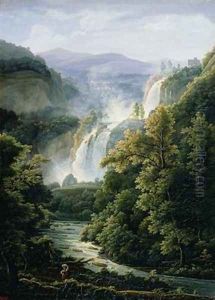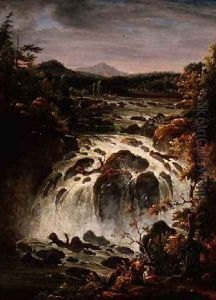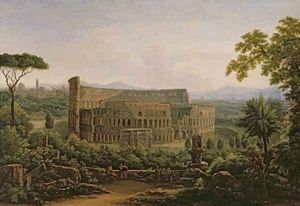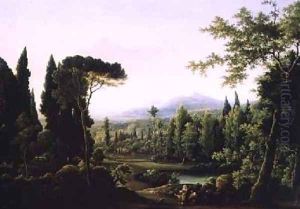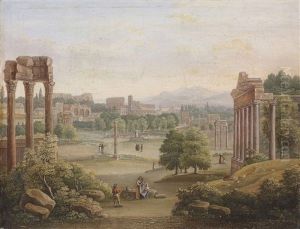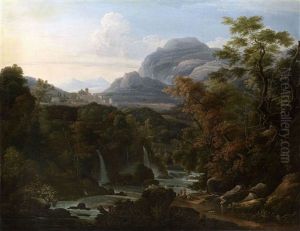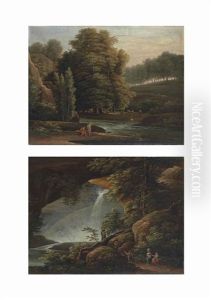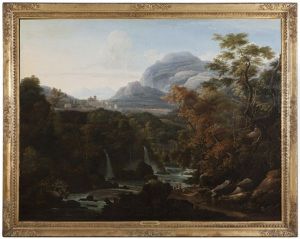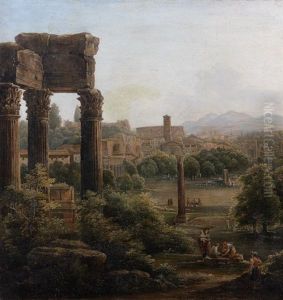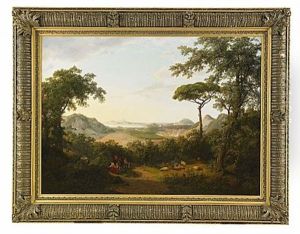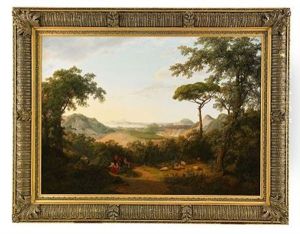Fedor Mikhailovich Matveev Paintings
Fedor Mikhailovich Matveev was a distinguished Russian landscape painter born in 1758. His artistic journey began in his homeland, but his talent and ambitions would soon take him beyond the borders of Russia, offering him exposure to the broader artistic movements of Europe. Matveev's work is notable for its pioneering role in the development of Russian landscape painting, a genre that was still in its nascent stages during his lifetime. Unlike the more traditional focus on portraiture and religious themes that dominated Russian art at the time, Matveev ventured into capturing the serene beauty of nature, making him a forerunner in his field.
Matveev's education and artistic development were significantly shaped by his studies abroad, particularly in Italy, which was a common destination for artists seeking to refine their skills and absorb the Renaissance and Baroque influences that Italy offered in abundance. His time in Italy, which spanned several years, was pivotal. There, he was deeply influenced by the Italian landscapes and the masterworks of Italian artists, which is evident in the stylistic choices and motifs present in his own landscapes. His works are characterized by a meticulous attention to detail, a harmonious palette, and an ability to capture the atmospheric qualities of light and air, attributes that were inspired by his study of Italian masters and the picturesque Italian countryside.
Upon returning to Russia, Matveev continued to develop his unique style, contributing significantly to the Russian art scene. His landscapes not only reflected the beauty of the Russian countryside but also incorporated the techniques and sensibilities he had acquired during his stay in Italy. This blend of Russian themes with Italian technique helped lay the groundwork for the future of Russian landscape painting, influencing subsequent generations of artists.
Throughout his career, Matveev enjoyed the patronage of the Russian nobility, which allowed him to work on a variety of projects, including commissions that are now considered landmarks in Russian art. Despite this, much of his life and work remain lesser-known compared to his contemporaries, partly due to the overshadowing prominence of other artists at the time and the specific challenges of preserving and promoting landscape art in Russia's cultural and historical context.
Fedor Mikhailovich Matveev died in 1826, leaving behind a legacy that has since been recognized for its pivotal role in the evolution of Russian landscape art. Today, his works are celebrated for their contribution to the genre and for the path they paved for future artists in Russia and beyond. Matveev's life and art remain a testament to the importance of cross-cultural exchange in the development of artistic styles and genres.
